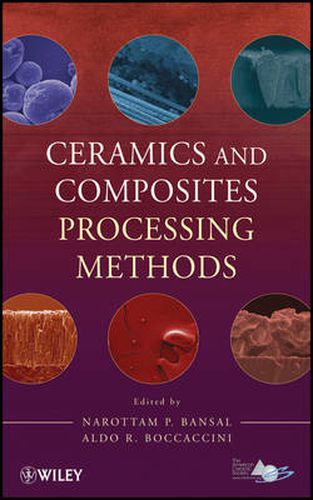Readings Newsletter
Become a Readings Member to make your shopping experience even easier.
Sign in or sign up for free!
You’re not far away from qualifying for FREE standard shipping within Australia
You’ve qualified for FREE standard shipping within Australia
The cart is loading…






Examines the latest processing and fabrication methods There is increasing interest in the application of advanced ceramic materials in diverse areas such as transportation, energy, environmental protection and remediation, communications, health, and aerospace. This book guides readers through a broad selection of key processing techniques for ceramics and their composites, enabling them to manufacture ceramic products and components with the properties needed for various industrial applications. With chapters contributed by internationally recognized experts in the field of ceramics, the book includes traditional fabrication routes as well as new and emerging approaches in order to meet the increasing demand for more reliable ceramic materials. Ceramics and Composites Processing Methods is divided into three sections: Densification, covering the fundamentals and practice of sintering, pulsed electric current sintering, and viscous phase silicate processing Chemical Methods, examining colloidal methods, sol-gel, gel casting, polymer processing, chemical vapor deposition, chemical vapor infiltration, reactive melt infiltration, and combustion synthesis Physical Methods, including directional solidification, solid free-form fabrication, microwave processing, electrophoretic deposition, and plasma spraying Each chapter focuses on a particular processing method or approach. Collectively, these chapters offer readers comprehensive, state-of-the-science information on the many approaches, techniques, and methods for the processing and fabrication of advanced ceramics and ceramic composites. With its coverage of the latest processing methods, Ceramics and Composites Processing Methods is recommended for researchers and students in ceramics, materials science, structural materials, biomedical engineering, and nanotechnology.
$9.00 standard shipping within Australia
FREE standard shipping within Australia for orders over $100.00
Express & International shipping calculated at checkout
Examines the latest processing and fabrication methods There is increasing interest in the application of advanced ceramic materials in diverse areas such as transportation, energy, environmental protection and remediation, communications, health, and aerospace. This book guides readers through a broad selection of key processing techniques for ceramics and their composites, enabling them to manufacture ceramic products and components with the properties needed for various industrial applications. With chapters contributed by internationally recognized experts in the field of ceramics, the book includes traditional fabrication routes as well as new and emerging approaches in order to meet the increasing demand for more reliable ceramic materials. Ceramics and Composites Processing Methods is divided into three sections: Densification, covering the fundamentals and practice of sintering, pulsed electric current sintering, and viscous phase silicate processing Chemical Methods, examining colloidal methods, sol-gel, gel casting, polymer processing, chemical vapor deposition, chemical vapor infiltration, reactive melt infiltration, and combustion synthesis Physical Methods, including directional solidification, solid free-form fabrication, microwave processing, electrophoretic deposition, and plasma spraying Each chapter focuses on a particular processing method or approach. Collectively, these chapters offer readers comprehensive, state-of-the-science information on the many approaches, techniques, and methods for the processing and fabrication of advanced ceramics and ceramic composites. With its coverage of the latest processing methods, Ceramics and Composites Processing Methods is recommended for researchers and students in ceramics, materials science, structural materials, biomedical engineering, and nanotechnology.